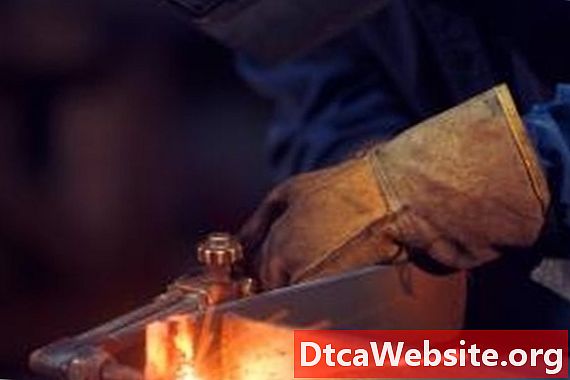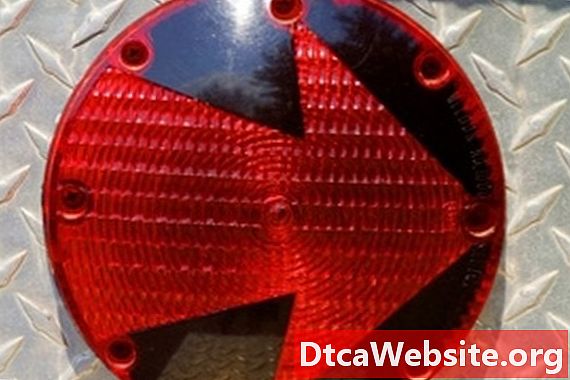
Contenu
- Preparation
- Step 1
- Step 2
- Step 3
- Step 4
- Tube Bending Process
- Step 1
- Step 2
- Step 3
- Step 4
- Constructing the Chassis
- Step 1
- Step 2
- Step 3
- Step 4
- Tips
- Warning
- Items you will need

Building a tube chassis from scratch can be a challenging endeavor for any metal fabricator, as design possibilities are nearly limitless. As a mixture of art form and science, building a tube chassis will require equal parts creativity and structural/ mechanical engineering understanding. However, there are some basic tools and methods that can help make the fabrication process simple and the final product "road worthy."
Preparation
Step 1
Develop a clear plan that you can execute to create your structure, steel or otherwise. Have a blue that shows the exact dimensions, angles and structural requirements for the chassis. This will ensure that your chassis is structurally robust enough to handle the stresses and forces that will be placed on it. Perform an Internet search for "tube chassis plans" if you need to locate a plan/design manual. Youll find numerous companies that sell complete CAD (computer aided design) manuals available for purchase, ranging from $20 to $200 or more as of October 2010.
Step 2
Place a small section of steel tubing in the tube bending machine and make a 90-degree bend. Use the framing square to ensure youve achieved a 90-degree bend. The idea behind this is to get the feel for your machine, which will be used hundreds if not thousands of times to complete your chassis. But it also serves an important purpose in giving you an extremely easy way to measure each bend accurately, without the need for complex charts or calculations.
Step 3
Establish where the bend begins and ends. You can do this visually (or by feeling) the distortion ridges on the inside radius of the bend. Use your permanent marker to draw a line around the tube at the beginning and end of this "distortion" area.
Step 4
Lay the 90-degree tube on the ground on the inside of your framing square, and establish how many inches it takes for the bend to start and stop. For example, it might measure six inches down the framing square and six inches out. The measurement should be equal on both the horizontal and vertical planes.
Use the measurement from the previous step to continue the example. If you want to create a curved tube that is 45 inches on the outside of the bend, subtract 12 from 45, which equals 33 inches from beginning to the end of the bend, with 12 being the six-inch measurement from step 4, multiplied by 2. Using this simple method, youll know exactly what it takes to make a bend of any size with that specific die (tubing) size. (If you have other die sizes involved in the build, complete the same process for that size tubing, establishing its own formula.)
Tube Bending Process
Step 1
Assume you want to create a hooped pillar, like what you might find in a roll cage, over your head. To create this, youll need to know the height and width of the piece from your plans. Find a clean space on the floor, take the chalk pen and draw a square using the height and width requirements listed in the plans.
Step 2
Draw a vertical line through the center of the width, bisecting the width of the square into two equal parts.
Step 3
Slide your 90-degree "practice tube" to the inside top right of the square until it touches both sides of the drawn square. Mark a line on the floor indicating where the start and stop points for the bend should be, with respect to the square. For example, if your start and stop point is six inches, then you would mark lines six inches down and six inches right on the squares perimeter. The top lines will represent the "start point" or beginning point for your bend.
Step 4
Find the center of your tubing to be bent and mark that center point. Lay your tubing out on the top of the square, with the center of the square and the center-line of the tubing lined up.
Mark your tubing at the "start point" lines, indicating, again, where youll begin your bends as you work out from the center line of your tubing. You can now begin bending your tube to the desired angles and shape. As you make each bend, place the 24 inch level on the piece of tubing to ensure no unwanted lateral twisting has occurred. If it does occur, the tubing through the tube bending machine in the opposite direction to reinforce the angle and straighten the piece.
Constructing the Chassis
Step 1
Start by mocking up your base chassis elements on a level, clean surface. Youll continue to do mock-ups throughout the build process; but this will be the most important one, as it defines the results of the entire chassis.
Step 2
Using a permanent marker, mark lines where tubing will need to be angle-chopped to meet other chassis tubing at a parallel angle. When making your cuts using the chop saw, always leave excess material past your cut line. If needed, you can grind the remaining off later.
Step 3
Position the tubing together, completing another mock up, checking all angles with your protractor to ensure your build is matching the plans. Make any adjustments using the grinder, and repeat the mock-up process. When youre happy with the mock up, clamp the tube elements together using your C-clamps.
Step 4
Begin by spot welding a few locations on the temporarily clamped joints. Remove the C-clamps and finish the weld, using a slow, smooth motion, ensuring that your weld bead is continuous and completely fills the joint.
Taking your next section of tubing, mock up the sections to be attached, and repeat steps 2-4 of this section.
Tips
- Start with single plane bends like this, until you get the hang of the bending process.
- The general cost for a basic tube bending setup will be approximately $1000 for the tube bending machine, $300--$500 for both a chop saw and grinder, $500--$1000 for a welder, and $500 for protective gear, measurement tools, etc., as of October 2010.
- When bending tubes, always work from the center of the tubing out.
Warning
- Avoid building a chassis and roll-bar as your first project. These designs are made to save your life, and youll want to be very comfortable in building/bending before you build a "life saving" structure.
Items you will need
- Chassis blues
- Steel tubing
- Tube bending machine
- Framing square
- Permanent marker
- Chalk pen
- Measuring tape
- 24-inch level
- Chop saw
- Hand-held grinder
- Protractor
- Metalworking C-clamps
- Welding apron/gloves
- Welders helmet
- Welder


